How to grow melons from seed
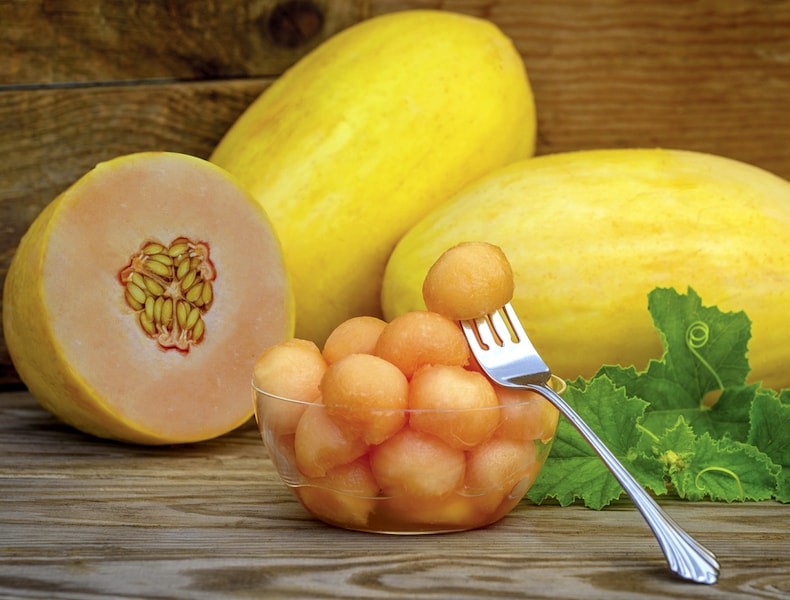
Melons can be successfully grown in greenhouses or under cold frames
Image: Melon 'Mangomel' F1 Hybrid from Thompson & Morgan
Here’s how to grow your own deliciously sweet and juicy melons from seed. A great way to enjoy this wonderful fruit at a fraction of the cost of supermarket alternatives, growing melons is fun and rewarding, and offers an excellent way to introduce young children to the delights of growing fruit from seed.
How to sow melon seeds
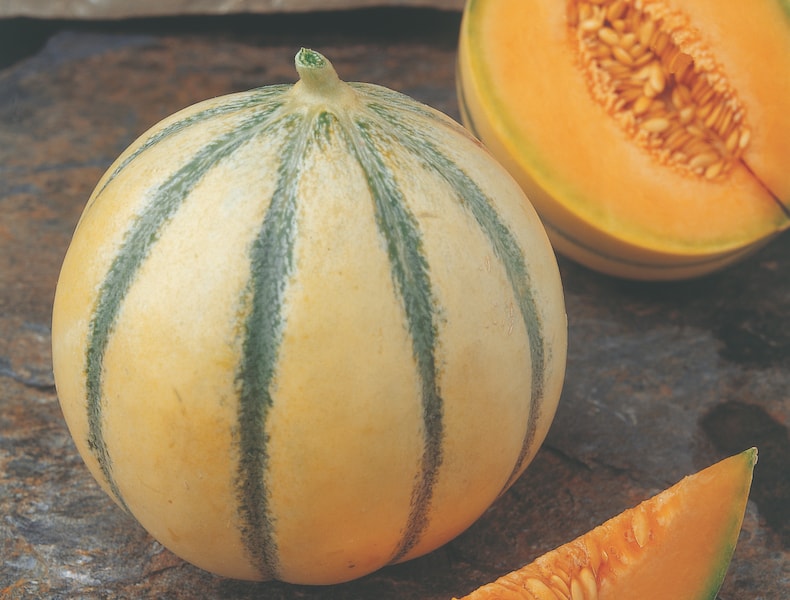
Melon 'Alvaro' is one of the few varieties that will ripen fully outdoors in the UK
Image: Melon 'Alvaro' F1 Hybrid seeds from Thompson & Morgan
If you’re growing them in a greenhouse, sow your melon seeds in March and April. If you’ll be growing them outside, wait until April or May so that the seedlings will be ready just as it’s getting warm enough for them. Sow in a heated propagator or greenhouse at a steady temperature of 70-75F (21-24C), setting each seed 0.5in (1.25cm) deep in a small pot of seed compost.
Once the seed germinates, wait until the four-leaf stage - the point at which the plant has produced its first pair of ‘true’ leaves (which enables photosynthesis). At this point, the plants are ready to be moved onto an open sunny site (in warmer parts of the UK) or to a cool greenhouse, cold frame or cloche. Allow each plant 3 feet of space.
Growing melons in a greenhouse
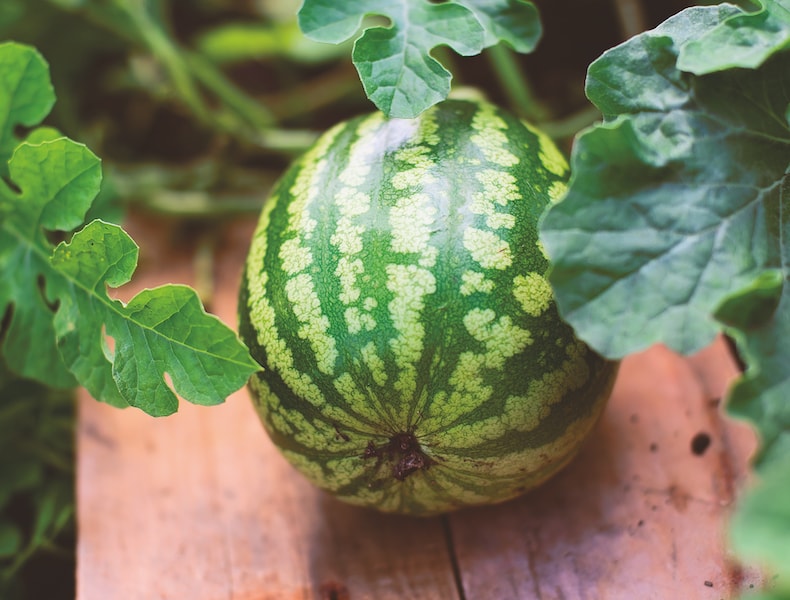
'Mini Love' watermelon seeds can be grown in a greenhouse or outside
Image: Watermelon 'Mini Love' seeds from Thompson & Morgan
To grow your melons in the greenhouse, plant the seedlings into soil enriched with well rotted manure or, alternatively, into 10in (8cm) pots or grow bags (three plants per bag). Train the growing plants up wires attached to horizontal framing inside the roof of the greenhouse. Pinch out the growing point once the plant reaches the roof.
While growing upward, the main stem also produces side shoots. Let these develop 2-3 leaves each and then pinch out their growing points also. These side shoots will produce shoots called sub laterals. It’s very important that these too should be allowed to produce 2-3 leaves before you pinch out the growing point - the female flowers grow best on these shoots.
When growing melons under cover, it’s advisable to hand pollinate the female flowers. These are the flowers with a slight swelling behind the petals. Taking a soft paintbrush, simply dust them with pollen from the male flowers that have no swelling at all.
Growing bush varieties in cold frames
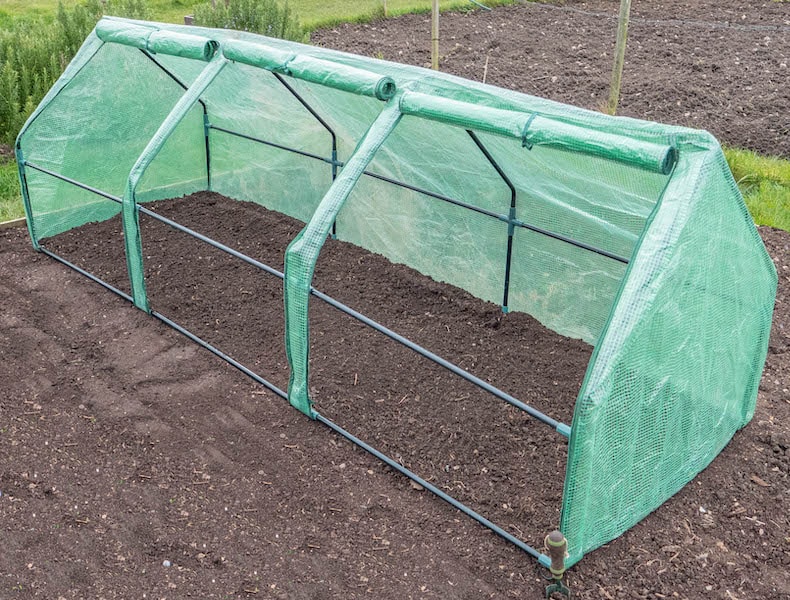
A cloche is a great way to raise the temperature for your melons
Image: Garden Gear Extra Long Apex Cloche from Thompson & Morgan
To grow bush varieties and climbing types in cold frames, pinch out the growing point when it has 5 leaves. Pinch out the growing point of the side shoots when they have 3 leaves. Then, select 4 of the most vigorous shoots and train these towards the four corners of the frame, removing all the other shoots. If you’re using a cloche, simply train two strong shoots in either direction along the cloche. Melons must have plenty of moisture at all times, along with regular feeding with a liquid fertiliser.
Growing melons outdoors
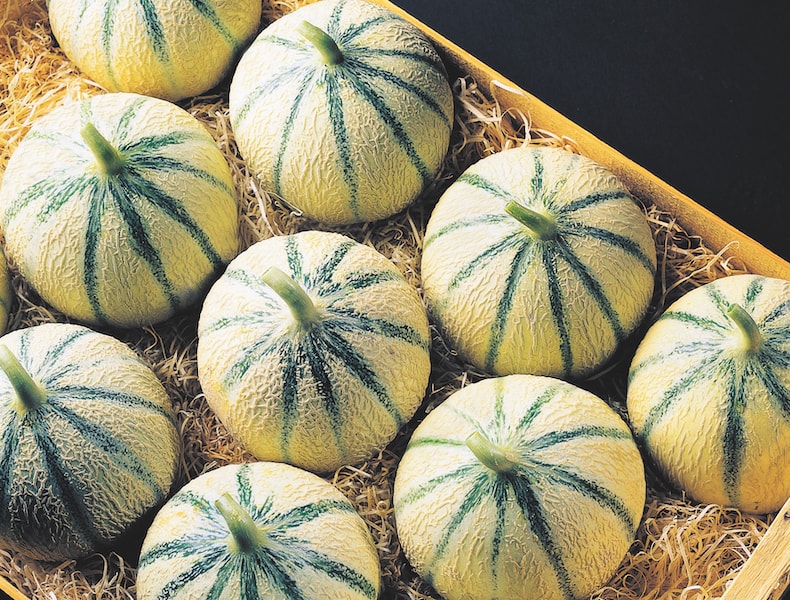
If you didn't manage to sow seeds, melon 'Anasta' plug plants are a great alternative
Image: Melon 'Anasta' (grafted) from Thompson & Morgan
Outdoor melons thrive in fertile well-drained soil which warms up early in the spring and which has incorporated into it plenty of well-rotted compost dug in the previous autumn. In order to really flourish, melons need a soil temperature of 70-75F (22-25C) and an air temperature of above 65F (18C). This really is a plant for the warmer areas of the UK.
About 3-4 weeks before you intend to plant out your melon seedlings, cover your melon bed with plastic mulch. This black plastic layer warms the soil, retains moisture, moves fruiting forward and improves fruit quality. Plant your melons in single rows after all risk of frost has gone and the soil is warm. Melons should be planted 20-36in (50-90cm) apart leaving 6-8ft (2-2.5m) between rows or other vegetables. Be sure to pull a little soil around the plant to keep it from touching the plastic mulch which can cause rot.
Melons require a lot of water, so make sure you dig a shallow water trench either side of the row, each approximately 2.5ft (80cm) from the centre of the plant.
As your plants develop, cut off the growing point just above the 3rd true leaf. With vigorous plants, a second pruning at the 8th leaf can be made. Outdoor melons should run along the ground and need no support.
When the flowers appear, hand pollination helps to prevent mis-shapen fruits. Watering is most necessary just after the fruits are set; at this stage water regularly and feed at 10-14 day intervals with liquid feed. Wait until the fruit is fully mature before harvesting. You can tell when your melons are ready because a small crack will appear near the stalk, and the melon will have a rich fruity fragrance. Harvest with 0.5in (1cm) of stalk attached.
Melons are quite easy to grow and provide a wonderful treat during the heat of summer. If you’re looking for more information, make sure you check out our fruit hub page where you’ll find a host of helpful advice.
Sign Up For Exclusive Special Offers




© 2024 Thompson & Morgan. All rights reserved. A division of Branded Garden Products Limited.
Sign up for exclusive offers!



